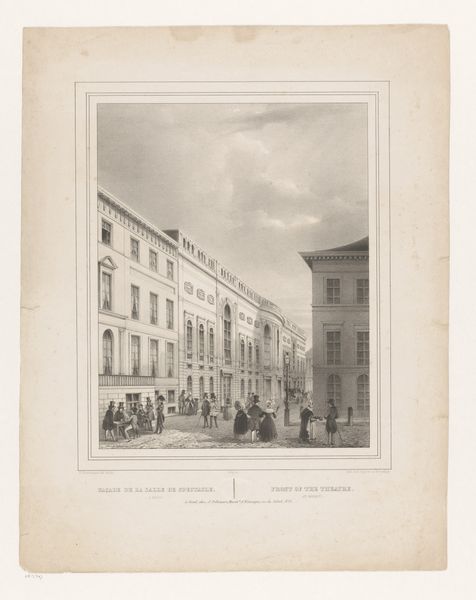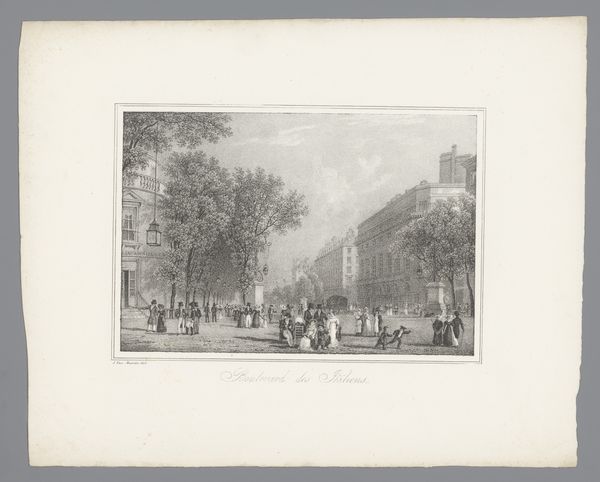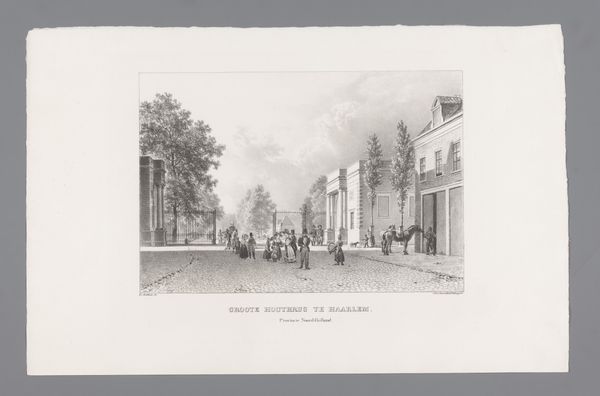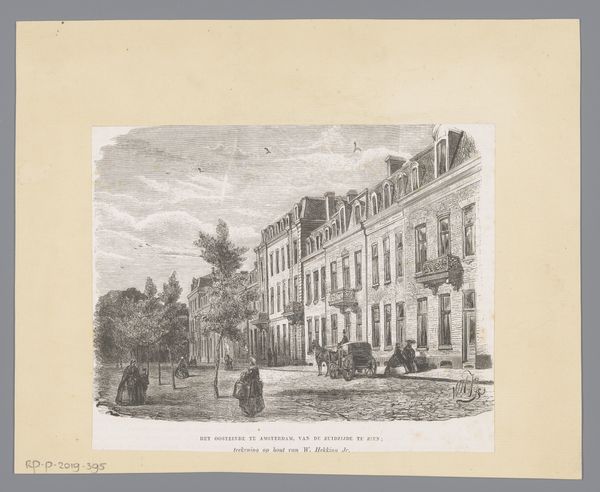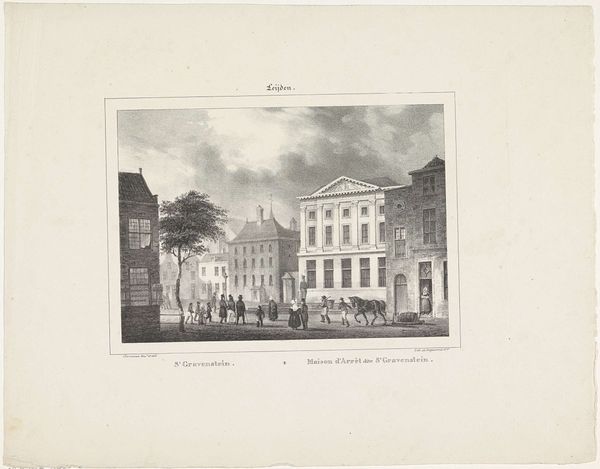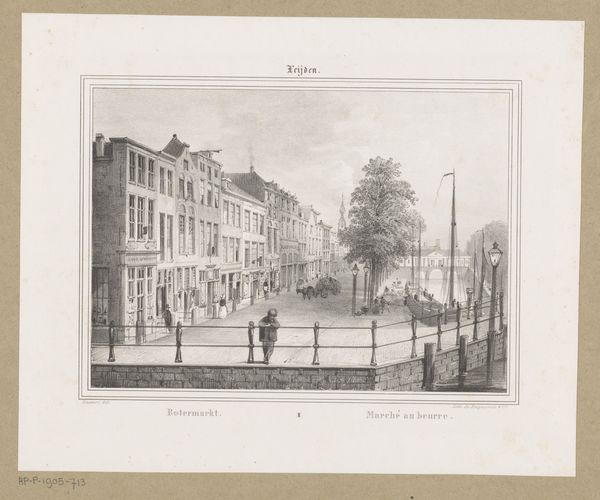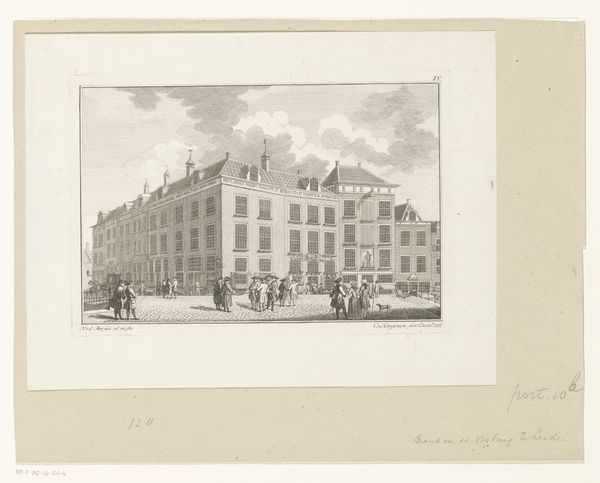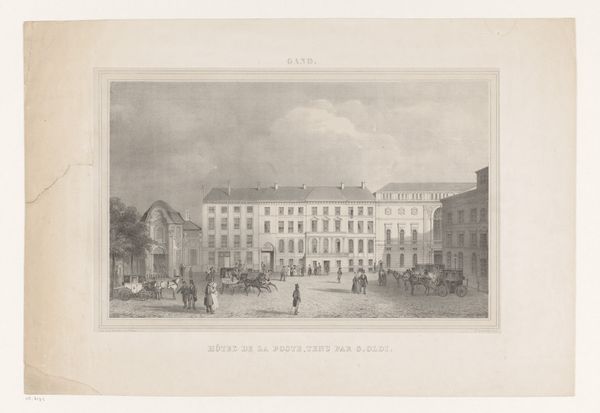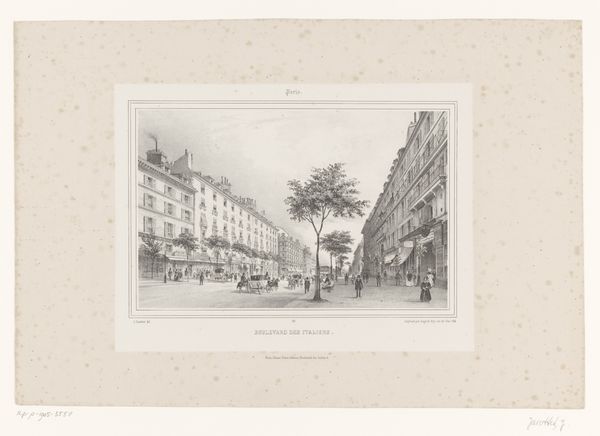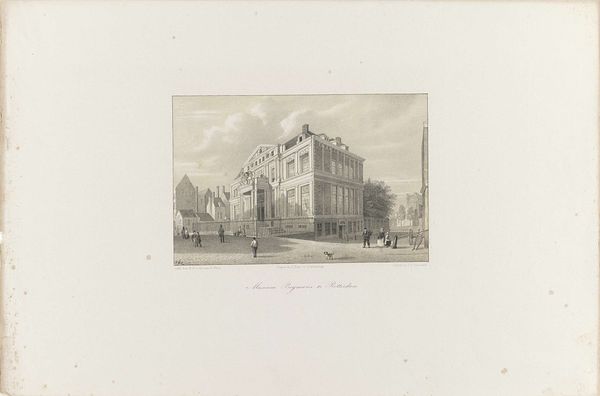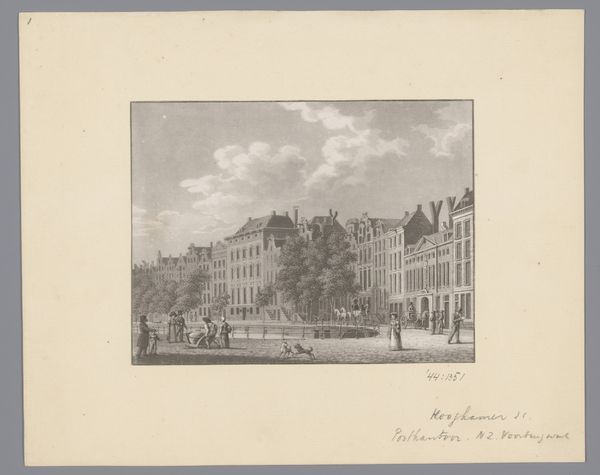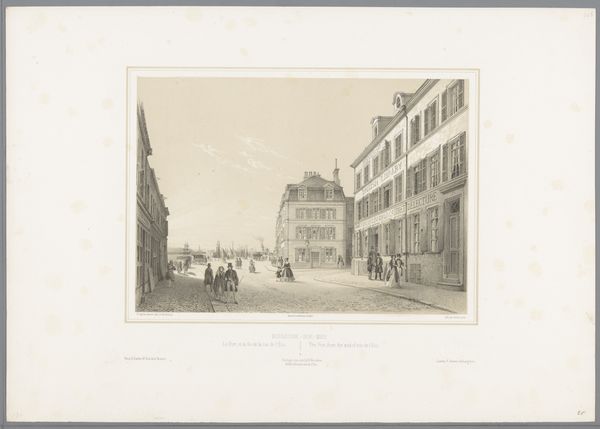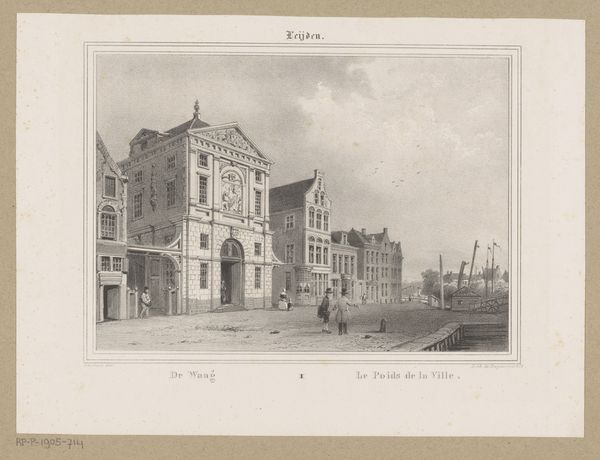
lithograph, print
#
dutch-golden-age
#
lithograph
# print
#
landscape
#
cityscape
#
realism
Dimensions: height 170 mm, width 250 mm
Copyright: Rijks Museum: Open Domain
Curator: This lithograph, titled "Oude Postkantoor te Amsterdam," depicts the old post office in Amsterdam around 1854. It’s attributed to Carel Christiaan Antony Last and gives us a glimpse into the city's past. Editor: There’s a subdued feeling to this image, isn't there? A quiet, almost melancholy atmosphere. The light is gentle, and the scene is rendered with incredible detail. Curator: Absolutely. As a lithograph, a printmaking technique, it allowed for a mass production, yet the artist achieved delicate gradations. The artist meticulously captures the architectural details and the everyday life unfolding. The choice of monochrome further emphasizes a kind of detached observation. Editor: The lone figure standing near the bridge almost becomes a symbolic anchor, doesn't he? It’s like he's observing time passing, standing at this crucial point between the old and the new, reflected in the description about how the buildings were demolished in 1854 to make way for a new postal building. I wonder what this site meant to residents, then and now? What memories did it trigger, and how has the function of postal exchange been superseded over time? Curator: That tension between change and memory is central, I think. Last captures not just a building, but also a moment of transition in Amsterdam’s urban fabric, one which would resonate through time and become iconic through images like this. The cityscape, almost a character itself, bears witness to the socio-political climate of the era. Editor: It invites a consideration of Amsterdam's civic identity too, shaped by the architecture that housed public functions. Even elements such as lamp posts seem like declarations of modern order, standing tall while change happened. The buildings feel very ordered, almost regulated by the new political system of the 19th century. Curator: Yes, exactly. It's a landscape deeply embedded with meaning and power, visually representing the story of a city evolving and the cultural memory attached to specific spaces. Editor: Well, looking at it from this perspective enriches the viewing experience. The artist managed to capture something meaningful, didn’t he?
Comments
No comments
Be the first to comment and join the conversation on the ultimate creative platform.
